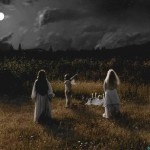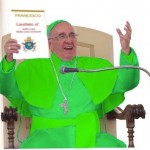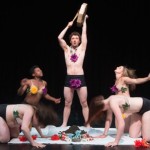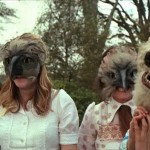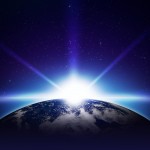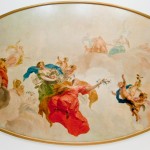In Part 1, I proposed a thought experiment: Where would Neo-Paganism be today without Wicca? I began by tracing the development of Neo-Paganism from it earliest origins in the Romantic Movement through the Sixties Counterculture, in order to show that the Neo-Pagan revival was inevitable, even in absence of Gerald Gardner and Wicca. In this Part, I want to try to imagine what Neo-Paganism would look like without Wicca. For those who came to Paganism via Wicca, it might be difficult to imagine Paganism without Wicca’s influence. But it is possible to conceptually separate Wicca and Neo-Paganism, at least partially.
Esotericism, Wicca, and Neo-Paganism
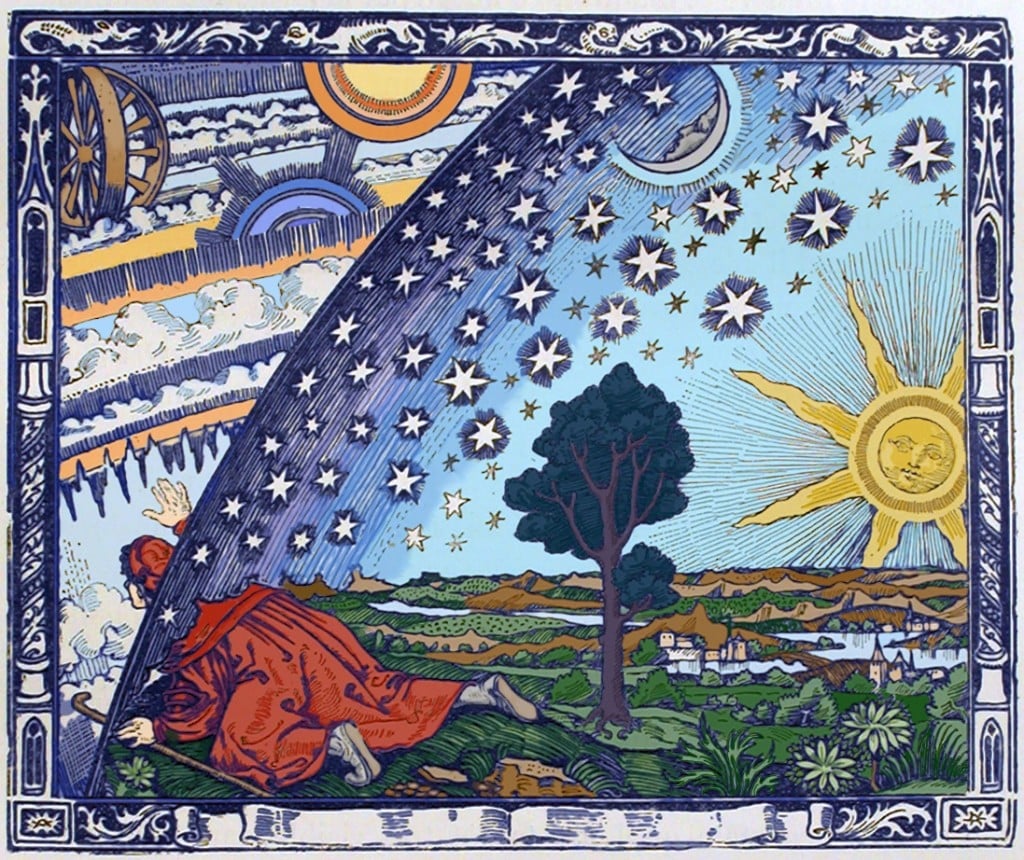 First in order to distinguish Wicca and Neo-Paganism, it is necessary to understand the how occultism or esotericism intersects with both. Not too long ago, a discussion about this issue took place on Facebook. Jason Mankey responded with a post in which he acknowledged that, without the occult, we might still have Neo-Paganism, albeit in a very different form. But what is occultism?
First in order to distinguish Wicca and Neo-Paganism, it is necessary to understand the how occultism or esotericism intersects with both. Not too long ago, a discussion about this issue took place on Facebook. Jason Mankey responded with a post in which he acknowledged that, without the occult, we might still have Neo-Paganism, albeit in a very different form. But what is occultism?
The “occult” is more or less synonymous with “esoteric”. The only difference is that the former sometimes carries a pejorative connotation and the latter tends to be used more in academic discourse. Esotericism refers to a nexus of related quasi-religious movements, sometimes called the “Western Esoteric Tradition” or the “Western Mystery Tradition”, which includes elements of Neoplatonism, Gnosticism, Hermeticism, Kaballah, ceremonial magic (or “magick”), astrology, alchemy, tarot, spiritualism, and Theosophy, and the philosophies of Jacob Bohme, Franz Mesmer, Emanuel Swedenborg, Helena Blavatsky, Rudolph Steiner, and Aleister Crowley. The common trait among these movements is the notion that there is secret or hidden (i.e., “occult”) knowledge which available only to a small elect group and only through intense study. This knowledge often takes the form of a system of hidden correspondences between levels of reality. Esotericism entered Neo-Paganism largely through Wicca, and it entered Wicca through Gerald Gardner and his association with Rosicrucianism, the Order of the Golden Dawn, and Aleister Crowley.
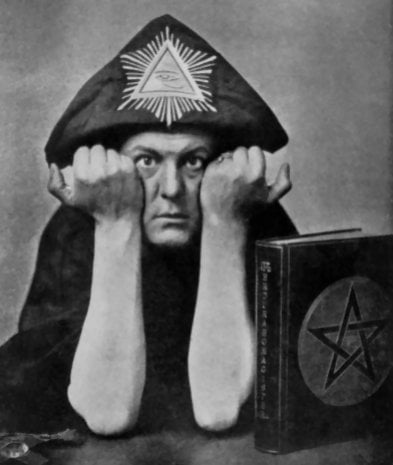 Several academics have attempted to distinguish esotericism from Neo-Paganism. In 1987, Robert Ellwood and Harry Partin, in reviewing the Neo-Pagan scene, observed a distinction between the British-influenced esoteric groups and the more nature-oriented forms of Neo-Paganism:
Several academics have attempted to distinguish esotericism from Neo-Paganism. In 1987, Robert Ellwood and Harry Partin, in reviewing the Neo-Pagan scene, observed a distinction between the British-influenced esoteric groups and the more nature-oriented forms of Neo-Paganism:
“The Neo-Pagan movement breaks down into two broad categories: the magical groups, deeply influenced by the model of the Order of the Golden Dawn, the O.T.O., and Crowley; and the nature oriented groups. The former are the more antiquarian; they love to discuss editions of old grimoires, and the complicated histories of groups an lineages. They delight in precise and fussy ritualism, though the object is the evocation of intense emotional power […]
“The pagan nature-oriented groups are more purely romantic; they prefer woodsy setting to incense and they dance and plant trees. They are deeply influenced by Robert Graves, especially his White Goddess. They are less concerned with evocation than celebration of the goddesses they know are already there. The mood is spontaneous rather than precise, though the rite may be as beautiful and complex as a country dance. […]
“Wicca itself is in the middle between magic and nature-oriented groups.”
— Robert Ellwood and Harry Partin, Religious and Spiritual Groups in Modern America
Elsewhere, Ellwood distinguished “occult groups”, which “offer initiation into expanded consciousness through a highly structured production of internal experiences and impartation of knowledge”, from “neopagan groups”, “which promote a new vision of man’s relation to nature, the archetypes of the unconscious, and the passions”.
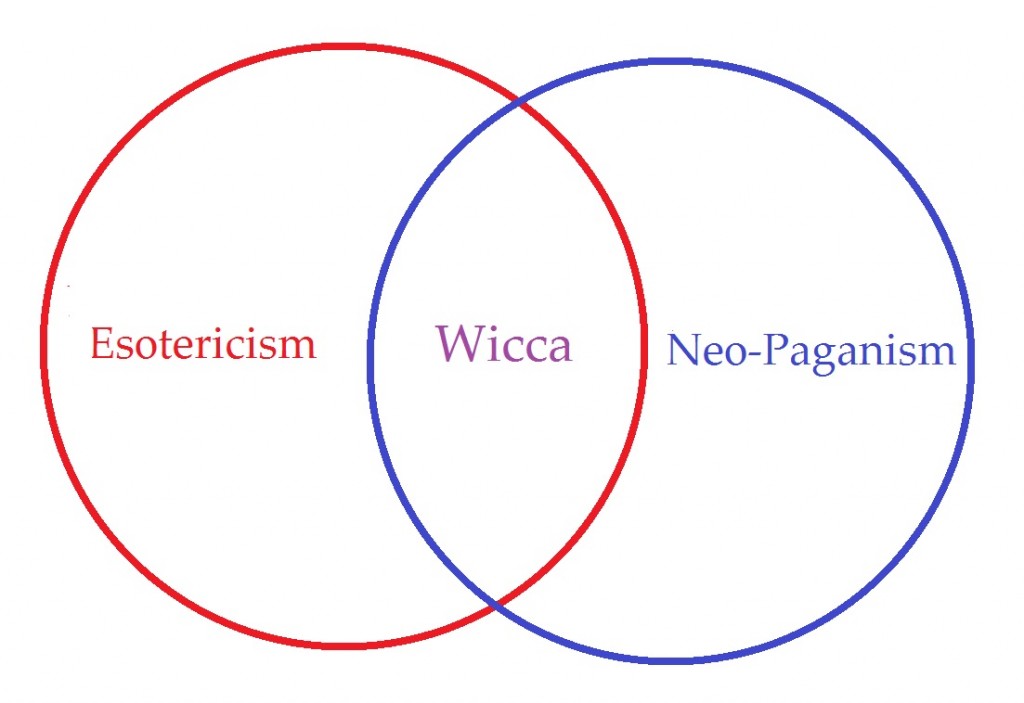 Similarly, in New Age Religion and Western Culture: Esotericism in the Mirror of Secular Thought, Wouter Hanegraaff observed “that Wicca is a neopagan development of traditional occultist ritual magic, but that the later movement is not itself pagan.” In fact, Hanegraaff admits that he might not have even included Wicca in his survey of Neo-Paganism if it had remained a “relatively self-contained England-based occultist religion”. Likewise, in Wicca and the Christian Heritage, Jo Pearson questions whether Wicca can even be considered a form of Neo-Paganism. She writes: “In many ways initiatory Wicca can be regarded as existing on the margins of Paganism.”
Similarly, in New Age Religion and Western Culture: Esotericism in the Mirror of Secular Thought, Wouter Hanegraaff observed “that Wicca is a neopagan development of traditional occultist ritual magic, but that the later movement is not itself pagan.” In fact, Hanegraaff admits that he might not have even included Wicca in his survey of Neo-Paganism if it had remained a “relatively self-contained England-based occultist religion”. Likewise, in Wicca and the Christian Heritage, Jo Pearson questions whether Wicca can even be considered a form of Neo-Paganism. She writes: “In many ways initiatory Wicca can be regarded as existing on the margins of Paganism.”
Obviously, in reality, things get quite a bit fuzzier than some of these quotes suggest. Rather than drawing a bright line, I think it would be more accurate to speak of degrees of difference. It might be helpful to think of Neo-Paganism and esotericism as two circles circumscribing different cultural phenomena with overlapping circumferences. Wicca falls within the overlapping area.
What would Neo-Paganism look like without without Wicca?
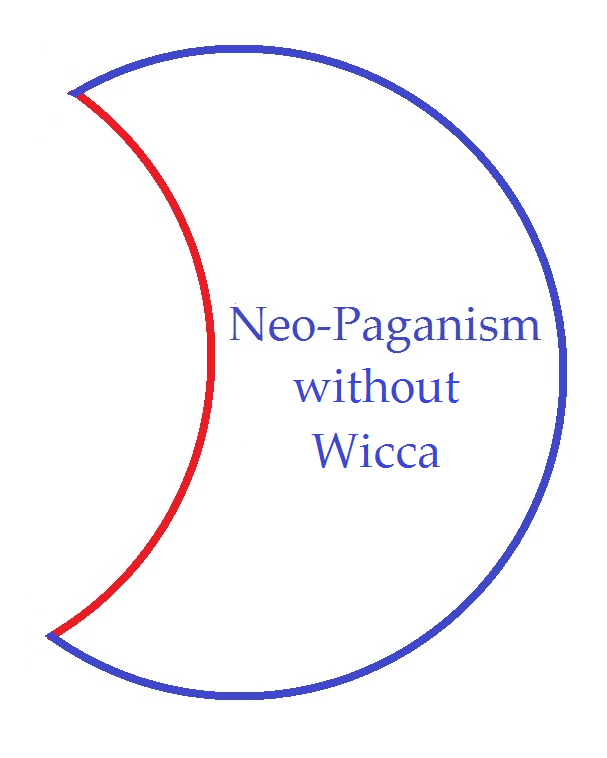 So when we talk about taking the Wicca out of Neo-Paganism, we are essentially talking about taking the esotericism out of Neo-Paganism — removing the entire red circle from the Venn diagram above. What would a purely “exoteric” Neo-Paganism look like? For those who came to Paganism via Wicca or practice a Wiccanate form of Paganism, it may be difficult to imagine that there would be anything left.
So when we talk about taking the Wicca out of Neo-Paganism, we are essentially talking about taking the esotericism out of Neo-Paganism — removing the entire red circle from the Venn diagram above. What would a purely “exoteric” Neo-Paganism look like? For those who came to Paganism via Wicca or practice a Wiccanate form of Paganism, it may be difficult to imagine that there would be anything left.
To begin with, there would be no Gerald Gardner, so no Doreen Valiente, and no Wicca. There would be no influence of Aleister Crowle or the Order of the Golden Dawn. There no “New Reformed Order of the Golden Dawn” (NROOGD) or other Wiccan traditions. There would be no Alex Sanders, no Raymond Buckland, no Janet and Stewart Farrar. No Ed Fitch and no Aidan Kelly. Probably about half of the names on my Neo-Pagan Celebrity Tarot would be gone. Some of these people become Paganism anyway, but their influence on the movement would have been different. For example, Selena Fox may still have found her way to Neo-Paganism without Wicca and may still have founded Circle.
But Fred Adams still would have had his vision of the “Mysterious Feminine” in 1956 and still would have founded Feraferia in 1967. Isaac Bonewits still would have roomed with an early member of the Reformed Druids of North America. The Green Egg still would have published its first issue in 1968. Tim (Oberon) Zell still would have had his Gaia-like vision of “Theagenesis” in 1970 and still would have coined the term “Neo-Paganism” to describe the emerging movement. Zsuzsanna Budapest still have founded the Susan B. Anthony Coven No. 1 in 1971, although Dianic witchcraft would have looked even less like Wicca than it did. Oberon and Julie Carter-Zell would still have gone on a tour of Californian Pagan groups in 1972 and met Fred and Svetlana Adams, Isaac Bonewits, and other leaders in the emerging Neo-Pagan community. The Council of Earth Religions founded in 1973 might actually have survived, due to there being less internal division. Robin Morgan, one of the founding members of W.I.T.C.H., still would have come out as a Dianic witch at a feminist conference in L.A. in 1973. The first Pan Pagan Festival may still have been held in 1976, but maybe not in the Midwest. And Margot Adler still would have found her way to Neo-Paganism — since she stated many times that she only became Wiccan because that was the only form of Paganism available to her at the time, and that her real love was Hellenic paganism — and she still would have written Drawing Down the Moon in 1979, although it might have been 100 pages shorter.
There would also be no Wiccan Rede, and no Charge of the Goddess. Perhaps a different Charge might have been created from:
- the theophany of Isis in Apuleius’ Golden Ass (“I am she that is the natural mother of all things, mistress and governess of all the elements … chief of powers divine, Queen of Heaven! … at my will the planets of the air, the wholesome winds of the seas, and the silences of hell be deposed”);
- the aretology of the goddess in the 3rd c. Gnostic text, Thunder Perfect Mind (“For I am the first and the last. I am the honored one and the scorned one. I am the whore and the holy one. I am the wife and the virgin.”); and
- Algernon Swinburnes’ poem Hertha (“I AM that which began … First life on my sources First drifted and swam; Out of me are the forces That save it or damn; Out of me man and woman, and wild-beast and bird: before God was, I am.”).
Perhaps it would have been written by Gleb Botkin (who found the Church of Aphrodite in 1938) or by Fred Adams (who founded Feraferia).
Neo-Paganism might still have elements duotheism, but it would be more relaxed than it is in Wicca. Following Robert Graves’ mythos, the “Horned God” would be divided into two gods — the Oak King and the Holly King. And probably the feminine principle (i.e., the immortal Goddess) would be emphasized over the masculine principle (her mortal consorts). This is, in fact, how Neo-Pagan theology developed outside of traditional Wiccan circles.
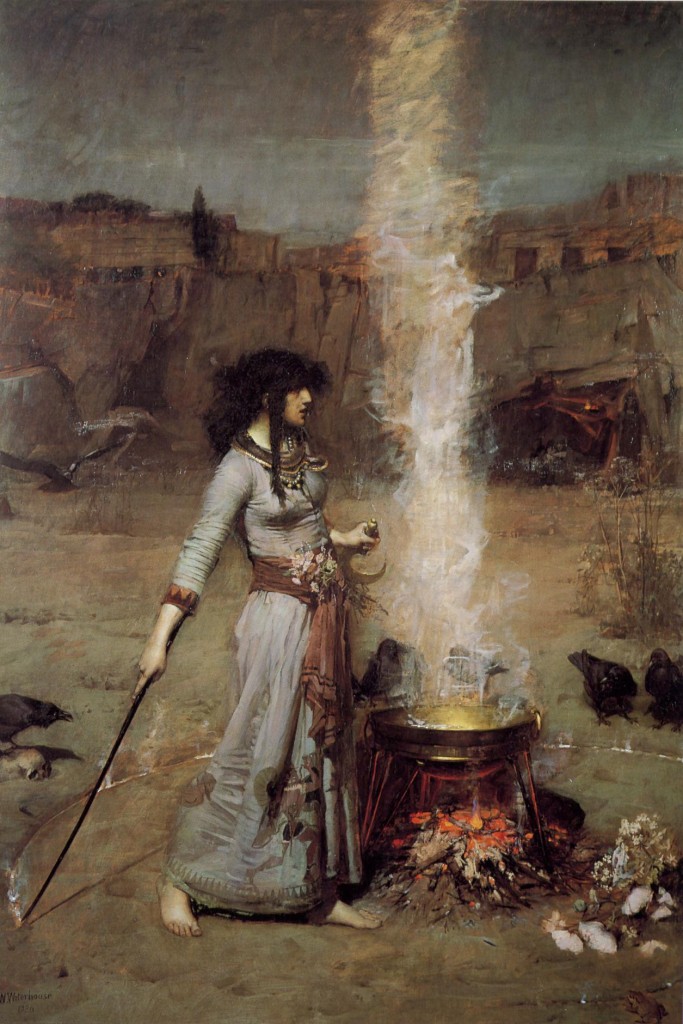 There would also be no “magick”, per se. Neo-Pagan ritual, divested of its esoteric elements, would be simplified. “Magic” would be seen more of an expression of wonder and connection, rather than control of metaphysical energies. Neo-Pagan ritual would be more rooted in the local land. There would be no casting of magical circles and no “cones of power”. There would be no calling of the quarters. There would be no association of the cardinal directions with the Empedoclean elements (earth, air, fire, water), and no association of the elements with Jung’s four functions (sensation, thinking, intuition, feeling).
There would also be no “magick”, per se. Neo-Pagan ritual, divested of its esoteric elements, would be simplified. “Magic” would be seen more of an expression of wonder and connection, rather than control of metaphysical energies. Neo-Pagan ritual would be more rooted in the local land. There would be no casting of magical circles and no “cones of power”. There would be no calling of the quarters. There would be no association of the cardinal directions with the Empedoclean elements (earth, air, fire, water), and no association of the elements with Jung’s four functions (sensation, thinking, intuition, feeling).
It is possible that Neo-Pagans might still gather in circles (which is just natural), but they would have come up with another way to create sacred space other than “casting the circle”. The circle would be seen not as a way of holding magical powers in or of keeping other powers out, but simply as a way of connecting people together. And perhaps we would stand facing outward, rather than standing with our backs to the world.
It is possible that use of a quartered circle might have developed in Neo-Paganism independently of Wicca. (According to Frederick Lamond, Gerald Gardner’s coven did not even associate the cardinal directions with the four elements at first.) The quartered circle is a kind of mandala which, according to Carl Jung, is a transcultural symbol of wholeness. Certain Native American Indian tribes, like the Hopi, constructed “medicine wheels”, quartered circles which are drawn on the ground, with each quarter being assigned a color, an animal, a stage of life, and an element. This practice could have entered Neo-Paganism through Ernest Westlake’s Order of Woodcraft Chivalry (OWC). Consider this description of the first OWC “folkmoot” ceremony on Lammas 1921:
“The sacred fire was lit in the center of a ritual circle, by four people dressed in colours appropriate to the elemental associations of each quarter, bearing greetings from its powers and proceeding in succession from east round to north. When it was burning, Westlake delivered the invocation (taken from Socrates): ‘Beloved Pan, and all ye outer gods who haunt this place, give me beauty in the inward soul and may the outward and the inward be one.’”
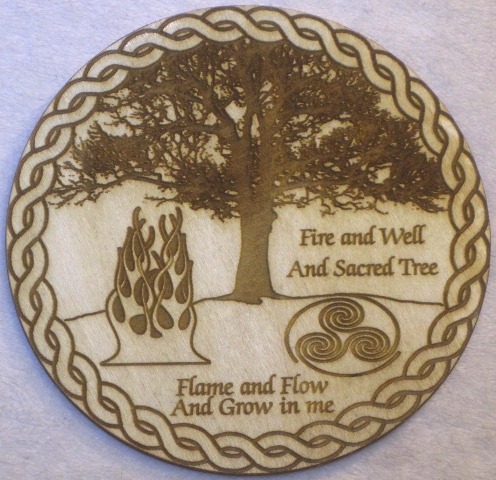 In Wicca’s absence, it is likely the Neo-Druidry would have played an even greater role in the development of Neo-Pagan ritual forms. The early druid orders, like the Ancient Order of Druids, were esoteric fraternities, but later Neo-Druidic orders — like the Order of Bards Ovates and Druids (OBOD) founded by Ross Nichols in 1964 and Ar nDraiocht Fein (ADF) founded by Isaac Bonewits in 1983 — were more Neo-Pagan in orientation. In the absence of the Wicca’s influence, it is possible that the Neo-Druidic three-fold division of sacred space into Land, Sea, and Sky or the ADF horizontal three-fold division into the Fire, the Well and the Tree would have taken the place of Wicca’s lateral four-fold division.
In Wicca’s absence, it is likely the Neo-Druidry would have played an even greater role in the development of Neo-Pagan ritual forms. The early druid orders, like the Ancient Order of Druids, were esoteric fraternities, but later Neo-Druidic orders — like the Order of Bards Ovates and Druids (OBOD) founded by Ross Nichols in 1964 and Ar nDraiocht Fein (ADF) founded by Isaac Bonewits in 1983 — were more Neo-Pagan in orientation. In the absence of the Wicca’s influence, it is possible that the Neo-Druidic three-fold division of sacred space into Land, Sea, and Sky or the ADF horizontal three-fold division into the Fire, the Well and the Tree would have taken the place of Wicca’s lateral four-fold division.
These Neo-Druidic ritual forms would have been spread through the Green Egg magazine and through the festival culture, just as Wiccan ritual forms were. Neo-Druidic terminology and ritual forms may have become the lingua franca for public Pagan events. Instead of complaining about Wicca-centric bias at Pan-Pagan gatherings, we would perhaps be complaining about a Druid-centric bias. And instead of debating whether Gerald Gardner “invented” Wicca, we would be debating whether Iolo Morganwg was inspired to forge the Barddas.
We would still have the Wheel of the Year, and the names might even be the same — with the exception of “Mabon”, which was an invention of Aidan Kelly, who was a member of NROOGD, which would not have existed in this thought experiment.
And instead of “Cakes and Ale”, perhaps we would have the Church of All Worlds’ Water Sharing ritual or the CAW “Pagan Sacrament of Holy Communion”.
In summary, without Wicca — and with the influence of esostericism thorough Wicca — Neo-Paganism might outwardly look somewhat different, especially to those who came to Neo-Paganism through Wicca or who practice a Wiccanate form of Paganism. But for other Neo-Pagans, the differences might not be all that significant. Some of us might feel the loss, especially if the esoteric elements are important to us, but others wouldn’t. But in spite of these differences, there would still be a vibrant and growing Neo-Pagan community, with unique ritual forms and a profound theology — even if Gerald Gardner had never become a witch.

